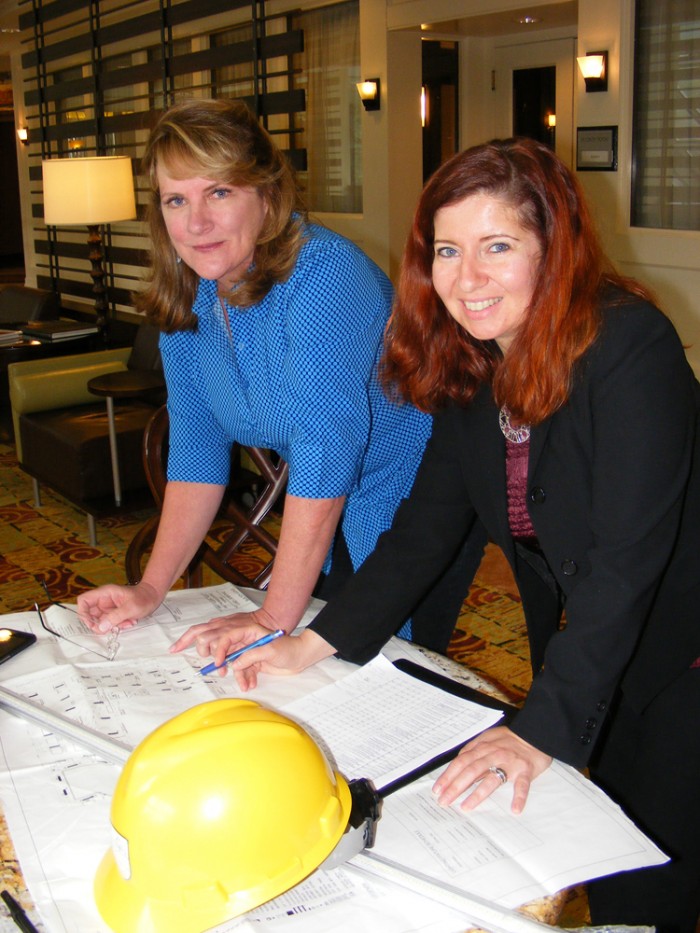Out of work, they build a business
Business partners Bonnie Hagen and Anne Farley were brought together a few years ago by shared circumstance ”“ middle-aged professionals left unemployed in the Great Recession. From that they have forged new careers and a fast-evolving metropolitan business in energy and environmental services for commercial properties that has made them a bright success story for federal investment in workforce training and the Westchester One-Stop Employment Center.

They are examples too of where determined pluck, redirected work experience and seized opportunity can lead.
A single mother in Briarcliff Manor with three children, Farley came to the one-stop center in White Plains in late 2008 after being laid off at MTV, her last, brief stop in Manhattan”™s broadcast television industry. For 18 years, she co-owned a television post-production graphics and animation company in the city before selling her interest in 2003 and joining ABC”™s national news desk in broadcast engineering and operations.
“I had not experienced unemployment before in my entire life,” she said recently in a Westchester hotel lobby. Lobbies are meeting places for the two managing partners of Bright Energy Services, whose parent company”™s office is in Brooklyn. With no office of their own in Westchester and operating as a virtual business, the county residents often use Skype to work together when they are not in the field at clients”™ buildings.
“But I didn”™t think of myself as unemployed,” Farley said. “I thought, I”™m going to channel my past experience into something different. ”¦ I wanted to work in an engineering-related way with the environment.”
At the employment center in White Plains, “I was overwhelmed by the number of people in the room,” she recalled. Those numbers had greatly increased as professionals joined blue-collar workers in the ranks of job seekers.
Her adviser said Farley could request funds for continuing education as an avenue to return to the workforce. She saw a flier on his desk about training as an accredited professional (AP) in the Leadership in Energy and Environmental and Energy Design program of the U.S. Green Building Council (USGBC).
Both she and Hagen enrolled in a training provider”™s preparation class for the LEED AP exam. They were among the few students in their class who went on to pass the LEED test; Hagen now prepares exam questions for the USGBC.
They also signed up for training as building analysts certified by the Building Performance Institute. Farley estimated the total cost of the educational programs at $8,000 to $10,000 for each trainee, which was paid by the Westchester-Putnam Workforce Investment Board, operator of one-stop centers, with federal funds.
Hagen had spent nearly two decades in marketing and advertising for Fortune 500 companies that included Philip Morris and Starwood Hotels and Resorts Worldwide Inc. in White Plains. She left to run her own health spa in Westchester and later re-entered the corporate world by joining an advertising firm. As companies cut their advertising budgets and contracts in the recession, “I ended up at the One-Stop” in early 2009, she said.
Hagen and Farley saw a business opportunity when Westchester County posted a request for proposals from contractors to perform free energy audits in single-family homes.
“It was just like a fluke, like, ”˜Let”™s try for this,”™” Hagen said.
Though their training qualified them for the work, “We didn”™t have a company with insurance and references,” she said. “We went to a bunch of different companies and lobbied” to be hired as their energy auditing arm.
After about a dozen rejections from companies in Westchester and the metropolitan region, All HVAC Service Co. in Brooklyn said yes to the women”™s proposal. Hagen and Farley reached a partnership agreement with the company, which now supports their Bright Energy Services with office and field staff. Theirs was the only women-owned business among six companies awarded contracts by the county.
Without their Brooklyn partner, “We could not have ramped up on our own this fast,” Hagen said.
The partners moved from energy audits for residences, where demand was low, to commercial properties, most with more than 100,000 square feet of space. Their clients”™ buildings include hotels, hospitals, convention centers, schools ”“ among them, the Briarcliff Manor School District buildings and Pratt Institute in Brooklyn ”“ warehouses and commercial office buildings. Farley said sports and fitness centers, with their high-energy use, are potential clients in Westchester.
The partners have become experts in tracking and advising clients on available public and private funding for energy conservation and environmental remediation measures offered by utilities such as Con Edison and agencies such as the New York State Energy Research and Development Authority.
Most of their business has come from word of mouth, and much of it has been focused in the five boroughs. “We”™ve been passed from handshake to handshake,” Farley said.
“Every day is different,” she said. Their work attire varies from hard hats and boots in the field to business suits for office meetings with CEOs.
“We”™ve walked more roofs in the five boroughs than I can count,” Farley said. “We”™ve sat on loading docks; we”™ve driven in trucks, you name it.”
“Every three months or so, we sit down and re-evaluate our business plan. We”™re responding to the marketplace.”
“To be competitive, you have to stay light, be nimble,” she said.